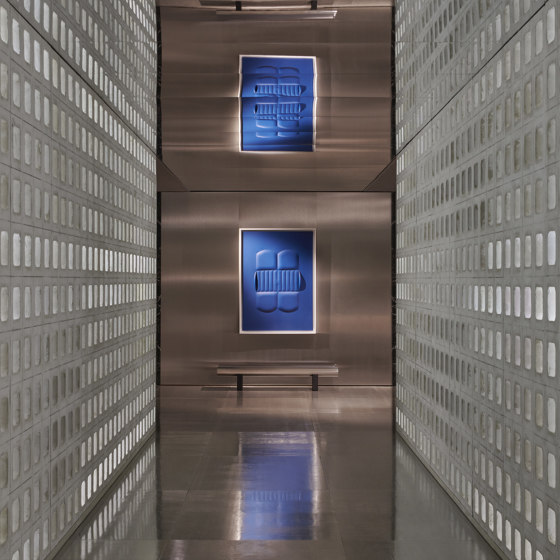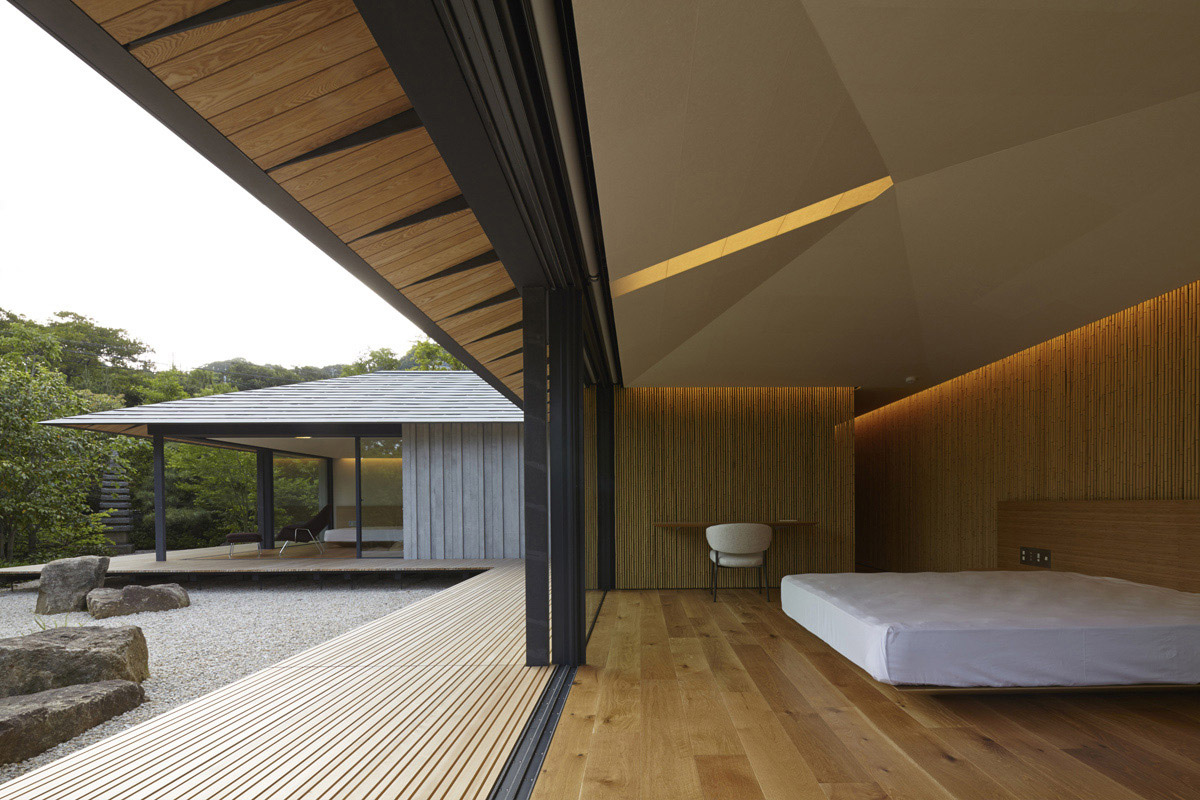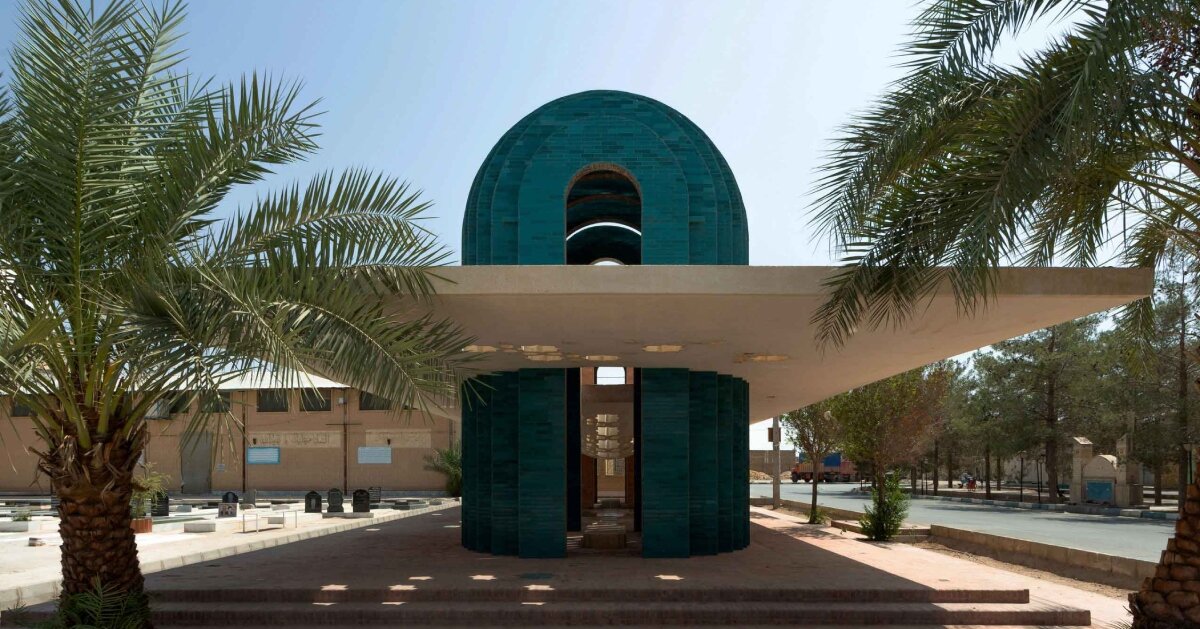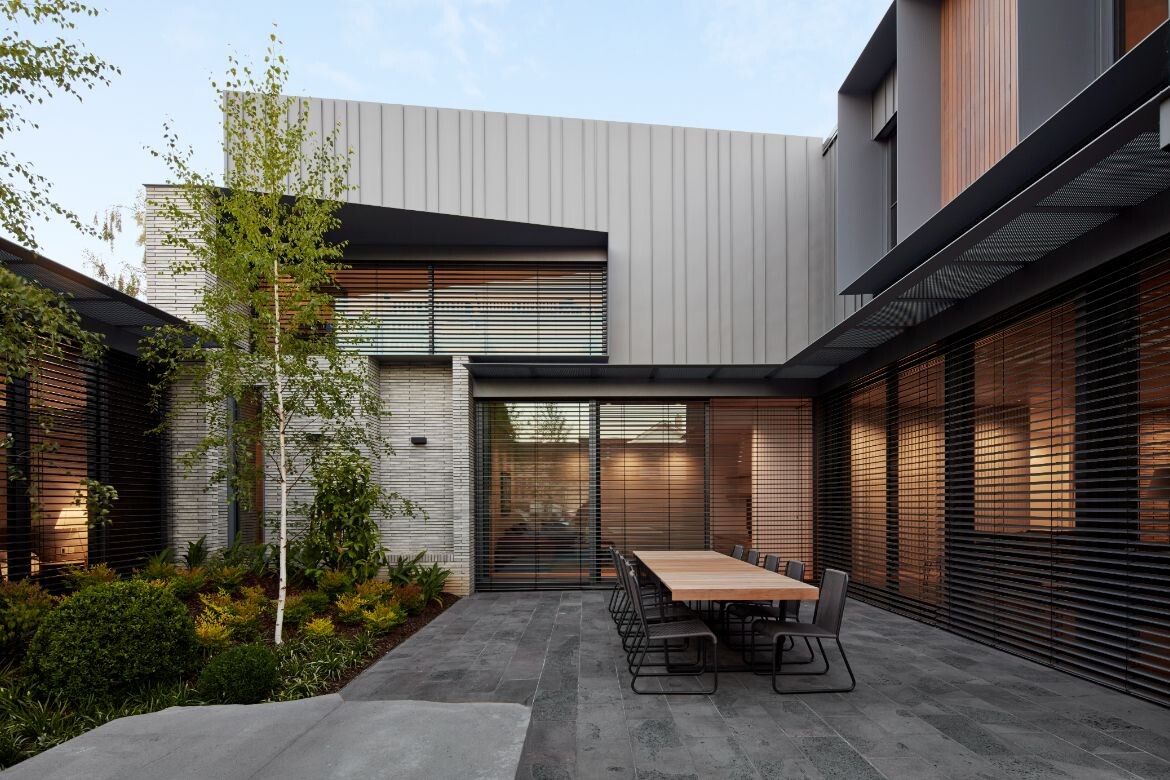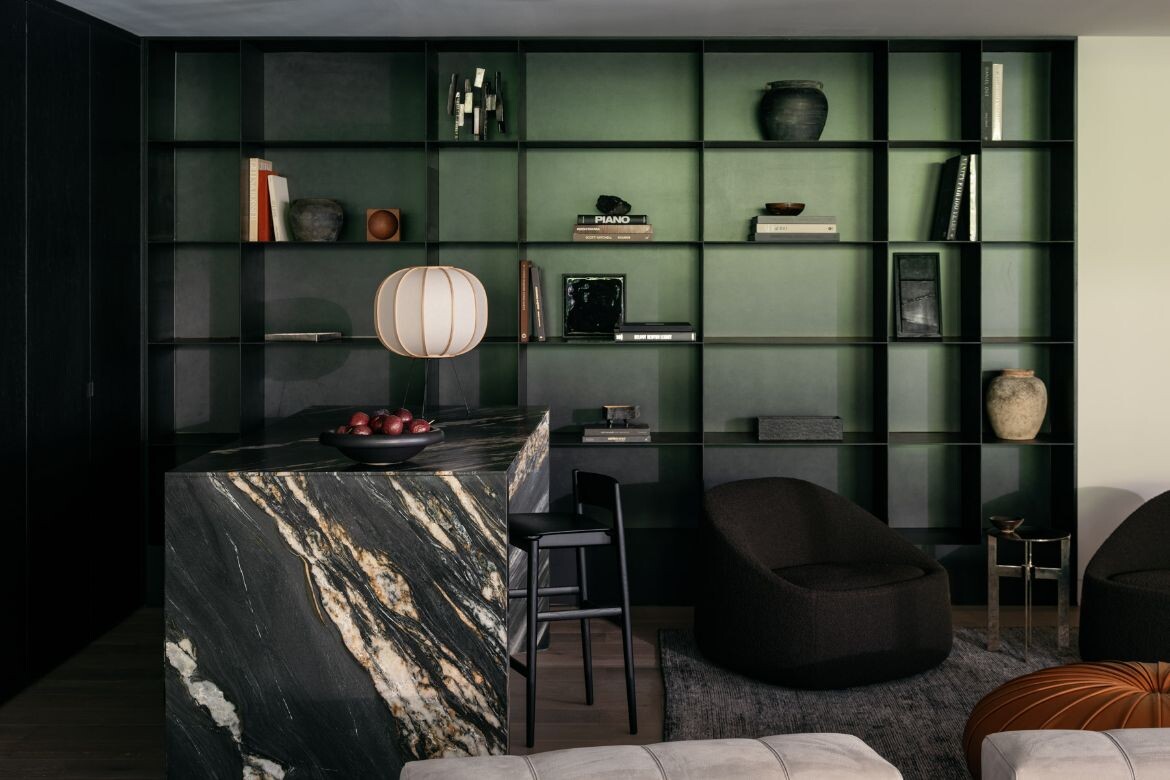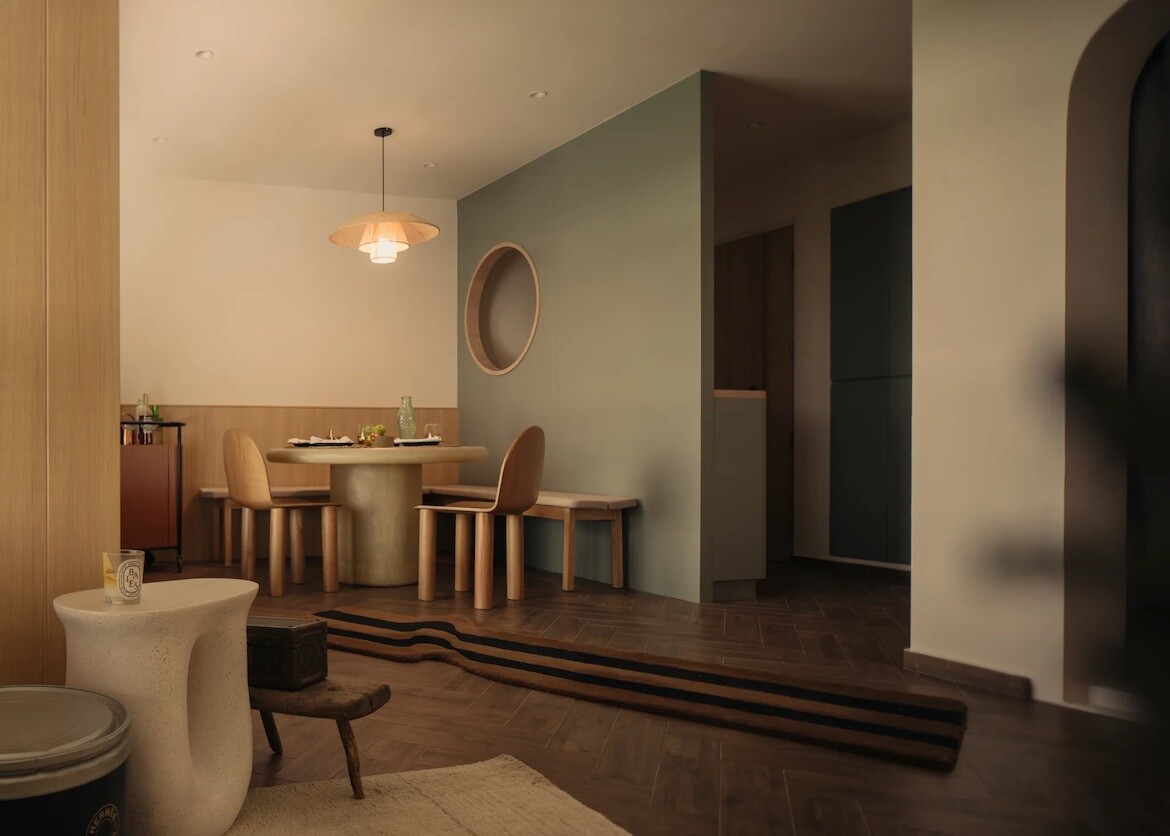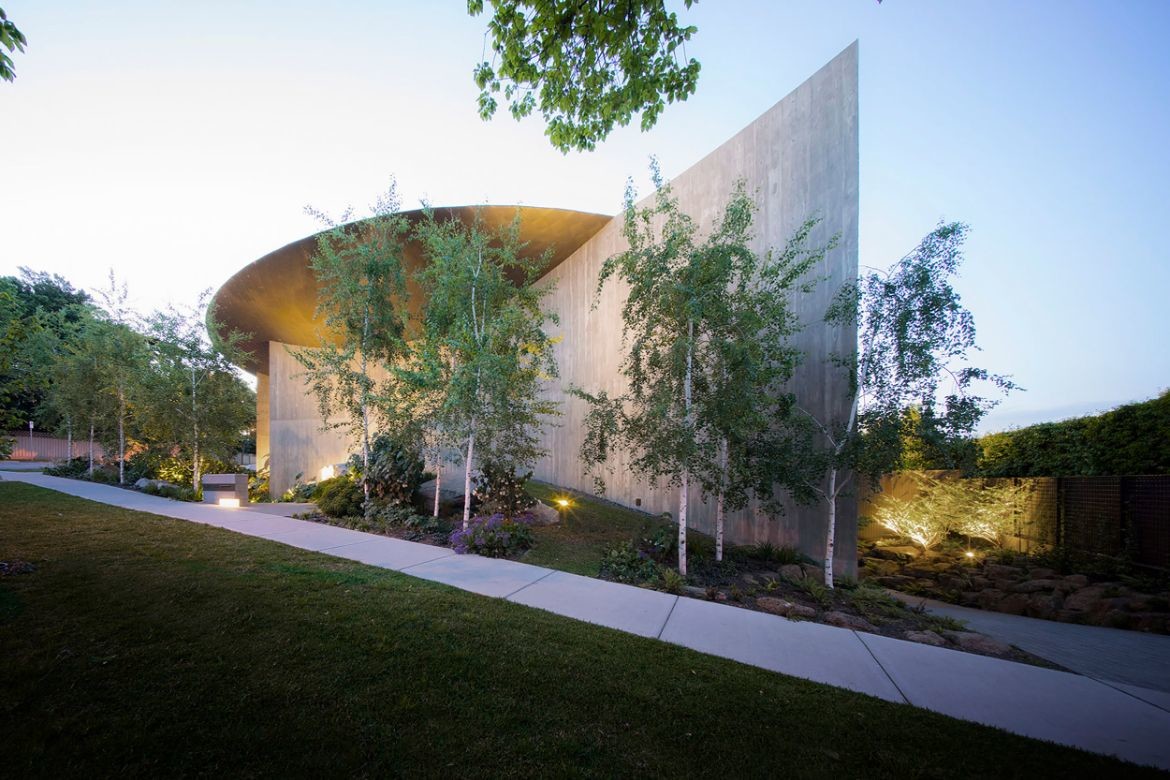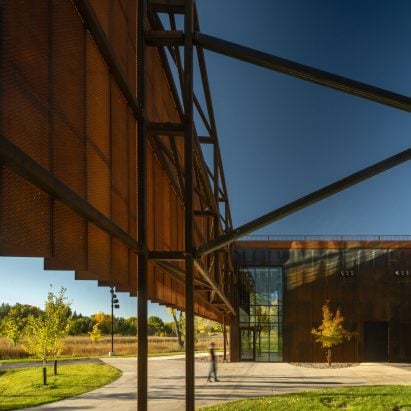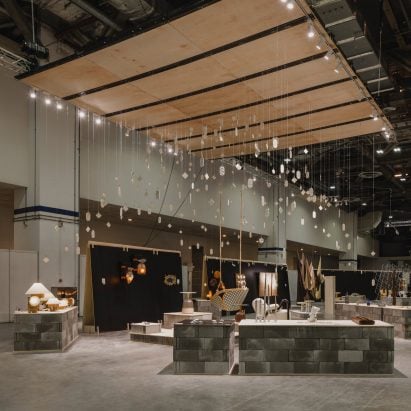Ecosistema Urbano creates modular plant tower to "mitigate urban climate change"
Madrid architecture studio Ecosistema Urbano has created a modular tower with inflatable awnings and stacks of native plants to mitigate the effects of climate change in urban areas. Polinature is a temporary installation located on the grounds of Harvard University to demonstrate a "short-term strategy that instantly generates biodiversity and climate comfort". Designers Belinda Tato The post Ecosistema Urbano creates modular plant tower to "mitigate urban climate change" appeared first on Dezeen.

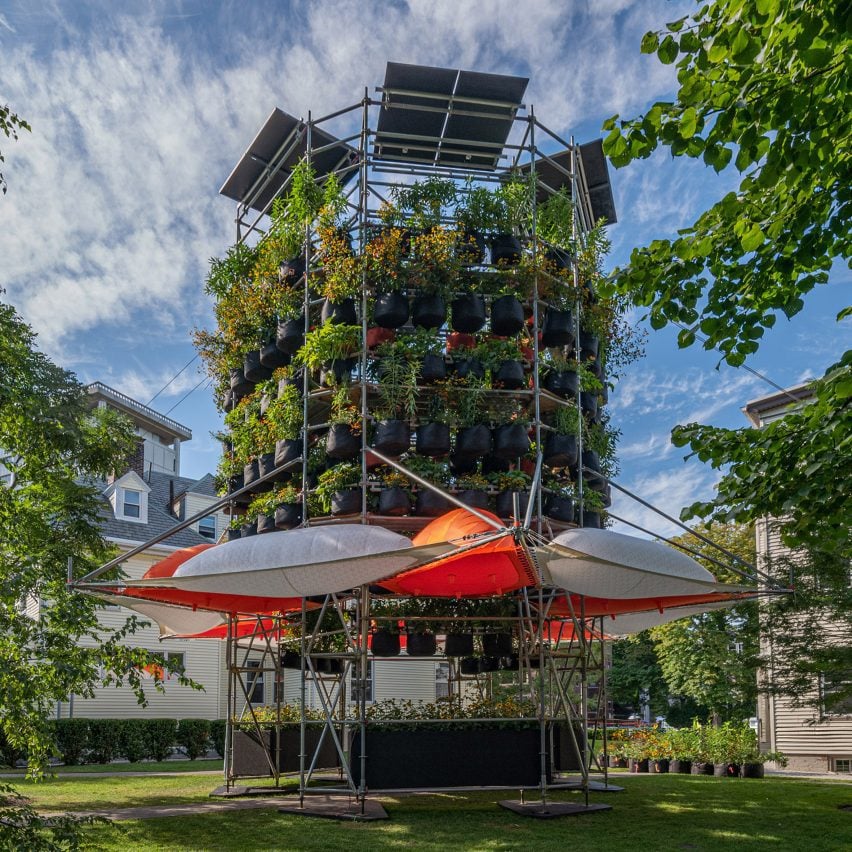
Madrid architecture studio Ecosistema Urbano has created a modular tower with inflatable awnings and stacks of native plants to mitigate the effects of climate change in urban areas.
Polinature is a temporary installation located on the grounds of Harvard University to demonstrate a "short-term strategy that instantly generates biodiversity and climate comfort".
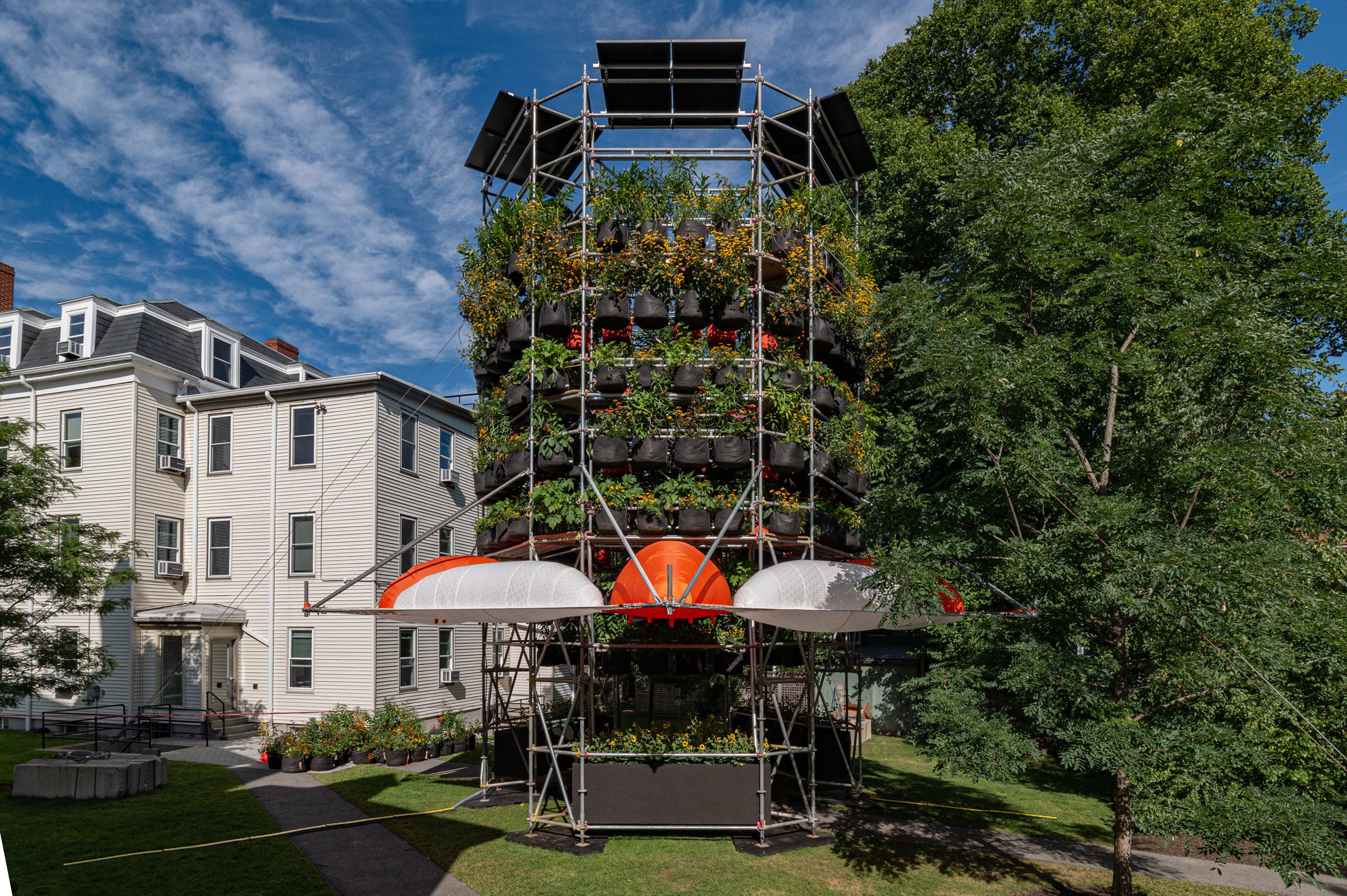
Designers Belinda Tato and Jose Luis Vallejo of studio Ecosistema Urbano created the structure to act as an affordable, "plug-in" public space that simultaneously provides shelter while attracting local pollinators to urban areas that lack greenspace.
More specifically, it is designed for communities impacted by the "park equity gap", which refers to a disparity in access to greenspace that disproportionately affects low-income communities and communities of colour.
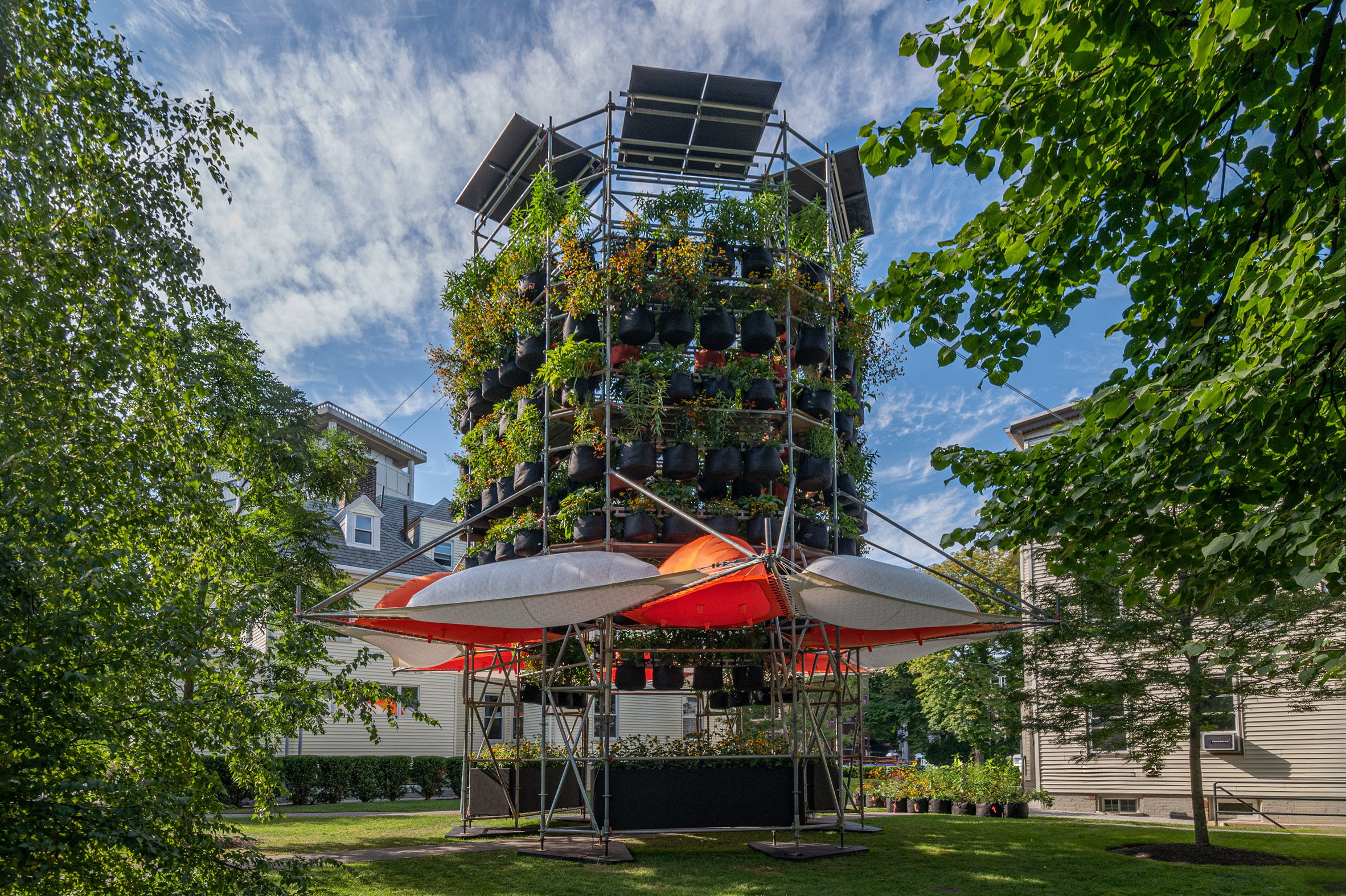
"As a result of the changing climate and the park equity gap, vulnerable communities will disproportionately face the largest consequences," said the team.
"Polinature is designed as a temporary solution to mitigate the effects of climate change in these vulnerable communities. It can be part of a short-term strategy that instantly generates biodiversity and climate comfort while longer-term policies and projects are developed and implemented."
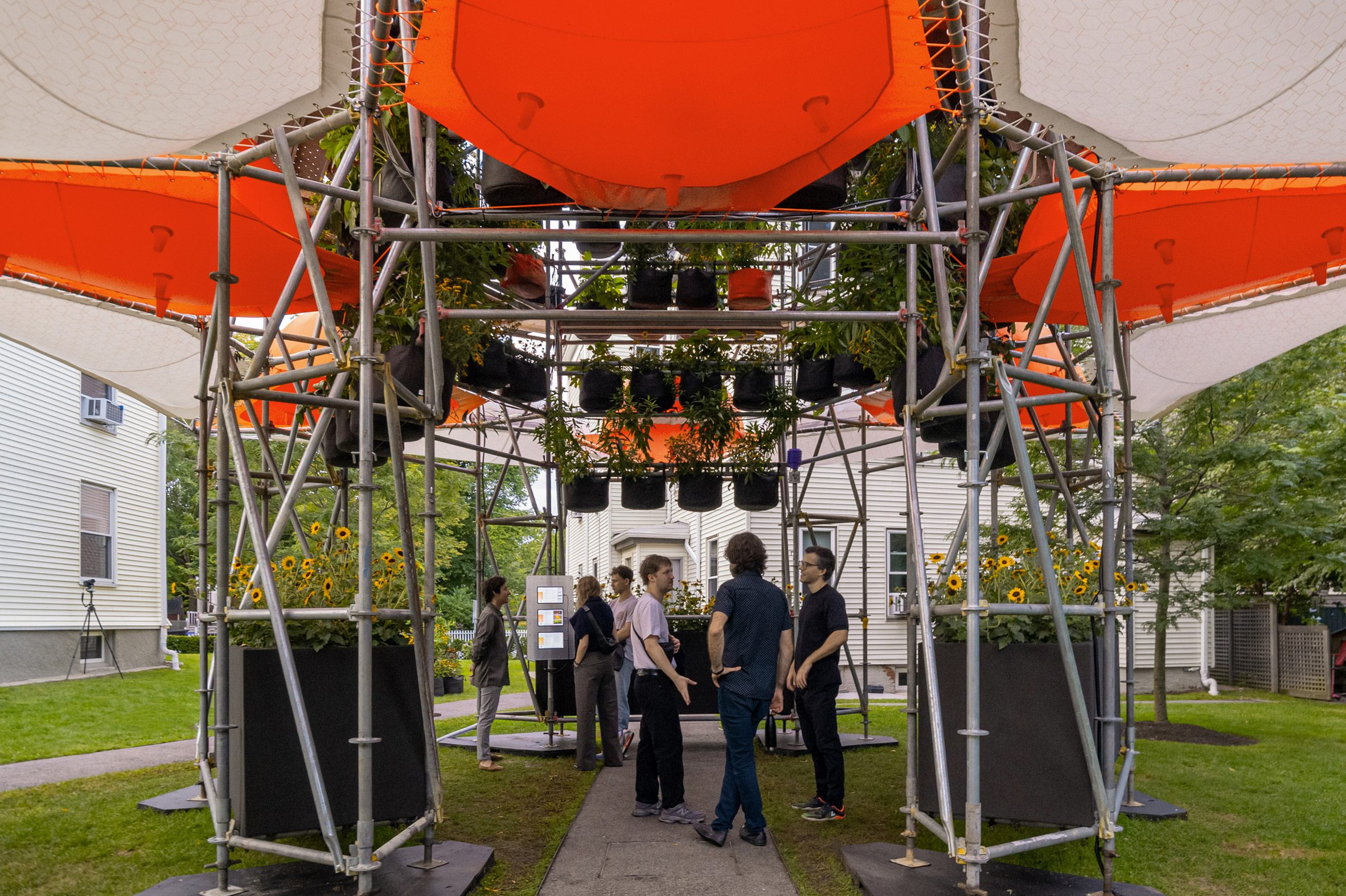
Polinature was designed as a "kit-of-parts" which contains re-useable elements that are relatively easy to access, affordable and simple to assemble and disassemble per a locality.
It is made of three fundamental components; a scaffolding structure, native plants and awnings that surround its base.
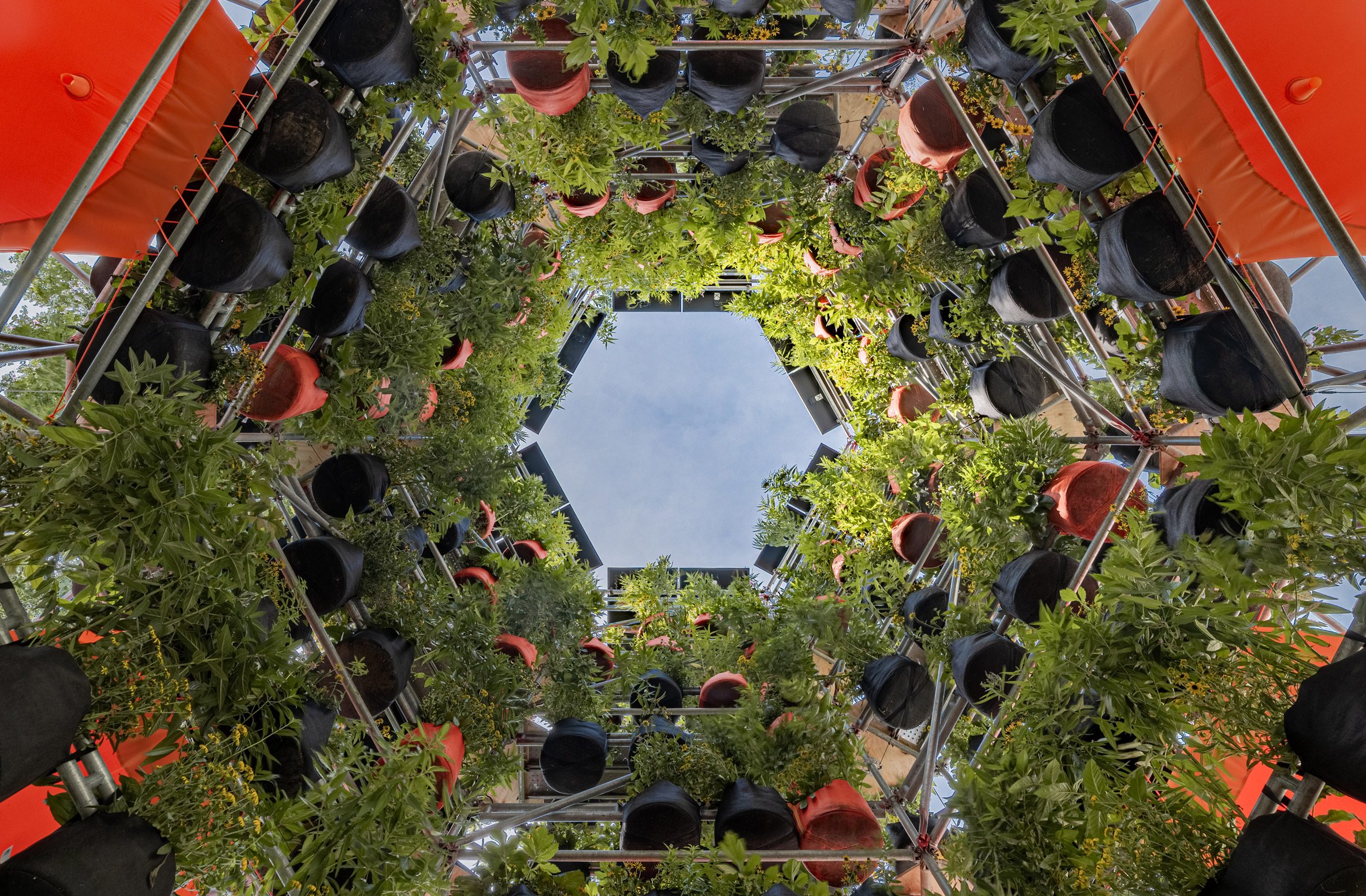
The scaffolding is combined to create a vertical tower, which is stabilised by counterweights and wire, and then wrapped in rows of native potted plants, which draw visits from local pollinators.
The lower canopy system, produced by Rhode Island design studio Pneuhaus, provides shade, lighting and "climatic" comfort to visitors through an alternating pattern of white and orange "bubbles".
The white units are "permanently inflated" and contain LED lighting, while the orange intermittently emits a burst of cooling air underneath in response to sensors that measure "climatic discomfort".
For its Harvard University iteration, these sensors surround the structure and continuously measure climatic conditions such as humidity and air particulate matter, broadcasting it to tablets inside the installation and also to its website for public access.
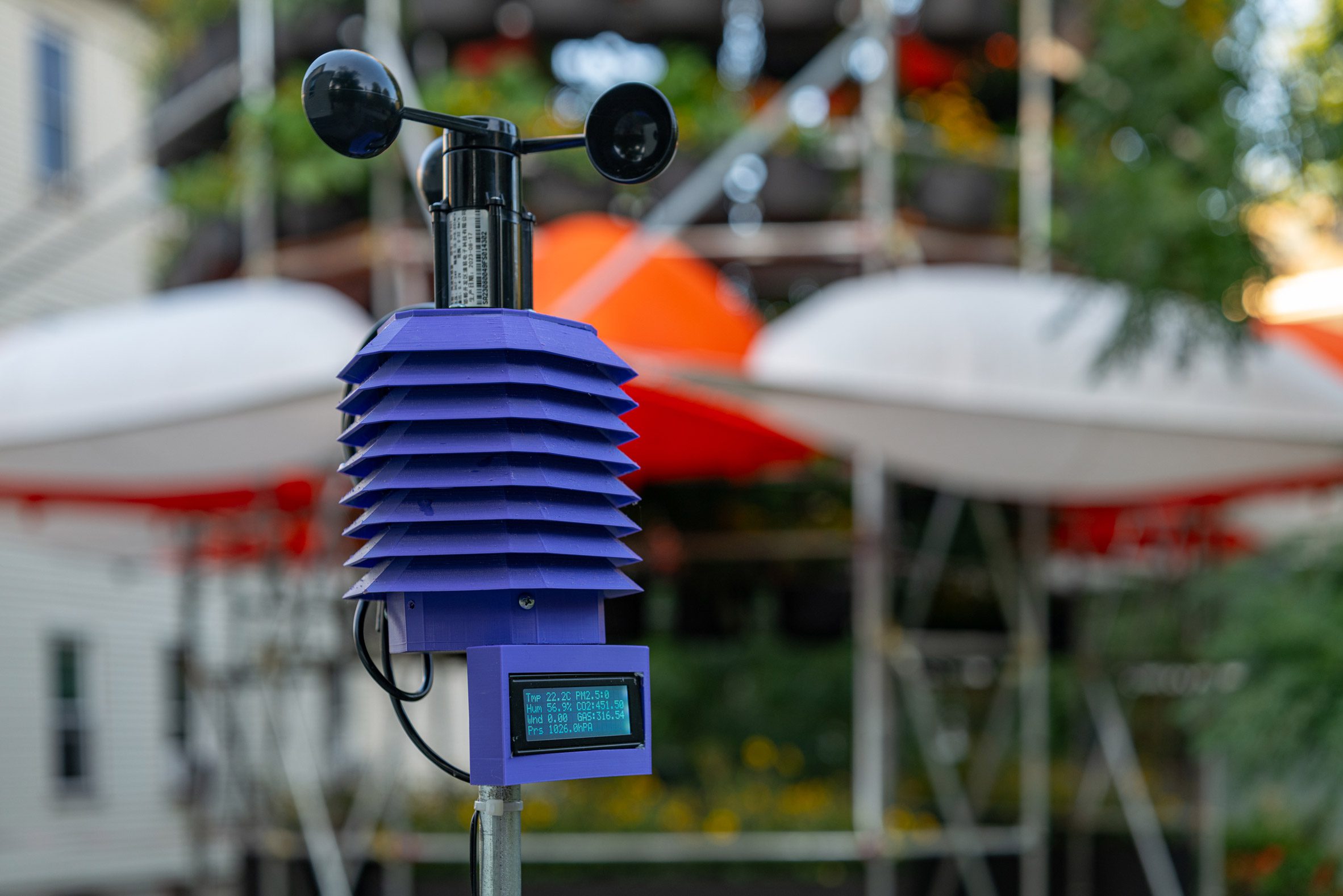
It also contains a crown of solar panels that powers the structure.
The Polinature concept is designed to adapt to the materials and specific conditions of a given site, whether it be "parking lot, a public park, or in a vacant lot" and the team plans to offer technical drawings open-source, so the design is accessible to the public.
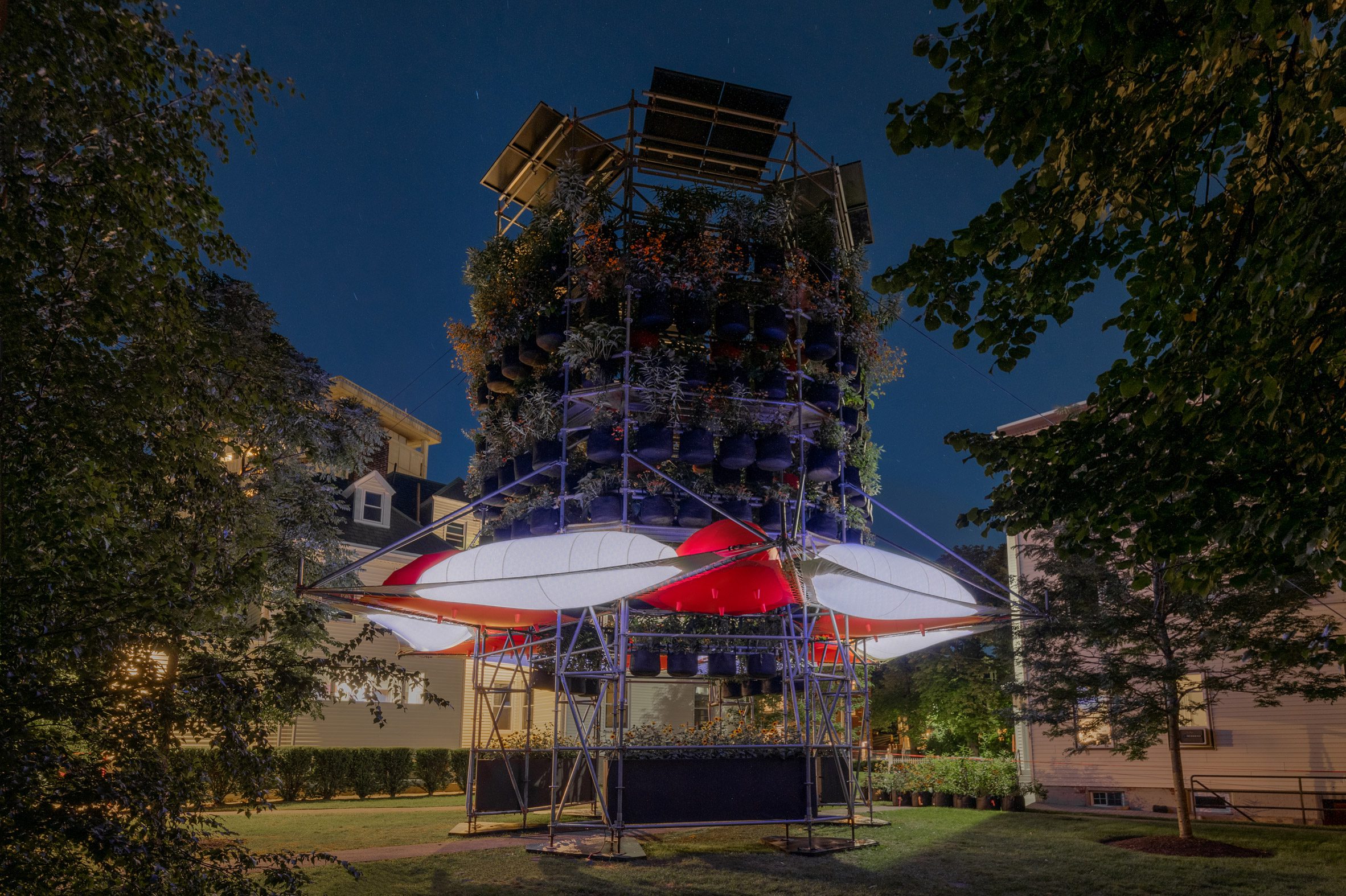
"Both plants and people can make a positive impact in addressing rising temperatures, and this installation provides the platform and tools both need to thrive," said the team.
"Each component of Polinature plays an important role in combating extreme heat and making cities more equitable by allowing access to comfort for all."
The photography is by Emilio P Doiztua
Polinature is on view in the backyard of Harvard Center for Green Buildings and Cities until mid-September 2024. See Dezeen Events Guide for an up-to-date list of architecture and design events taking place around the world.
Project credits:
Concept and design: Ecosistema Urbano
Project directors: Belinda Tato [Associate Professor in Practice of Landscape Architecture at the Harvard GSD] and Jose Luis Vallejo
Coordination and execution management: Marco Rizzetto, Lily Liebes
Funding: Salata Institute for Climate and Sustainability at Harvard University and the GSD Innovation Grant
Design team: Vicky Vlachodimou, Jorge Izquierdo, Elena Castillo, Julia Casado, Nadyeli Quiroz
Architect of Record: EvB Design-Edrick vanBeuzekom, Keith Giamportone, Aaron Fuller
Landscape contractor services and sensor design: Urban Horticulture Design-Andrew Leonard, Alexia Morosco, Weston Nurseries
Landscape installation: Salt Meadow Farms Landscapes and Nurseries-Dan Jensen, Laura Beebe
Scaffolding structure: Seacoast Scaffolding & Equipment-Bryan Pirani, Joe Kulpa
Inflatable canopy: Pneuhaus-Levi Bedall, Matthew Muller, August Lehrecke
Solar panels: Solect Energy-Bob Plakias
Solar panel system production: 621 Energy-Bob Clarke, Jordan Stephens
General contractor: Picker Construction-Pablo Picker
Design research: GSD Students Gabe Colombo, Elence Chen, Angela Moreno-Long
Screen display case: Harvard Graduate School of Design Fabrication Lab-Marco Martins, Rachel Stefania Spodaryk Vroman, Aaron Stephen, John Andrew O'Keefe, Minyoung Hong
Air speed research and simulations: Corinne Leclerc
Web interface and sensor configuration: Álvaro Hassan
The post Ecosistema Urbano creates modular plant tower to "mitigate urban climate change" appeared first on Dezeen.
What's Your Reaction?
















